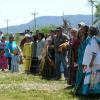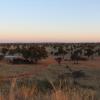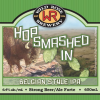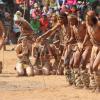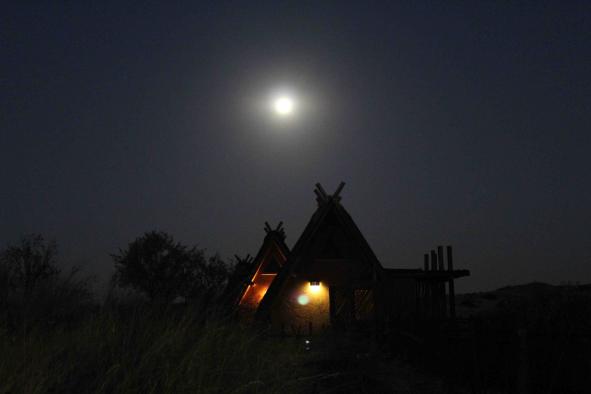
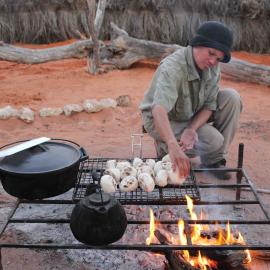
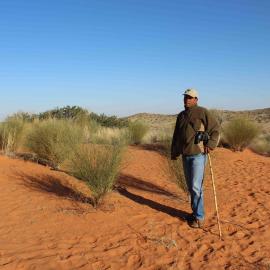
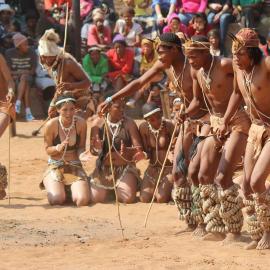
Does cultural tourism always exploit those whose culture is on display? What happens when communities are in charge of their own cultural tourism ventures?
These questions propelled Rachel Giraudo's survey of San-run cultural tourism projects in South Africa, Namibia, and Botswana, supported, in part, by an IPinCH fellowship.
The San encompass members of many ethnic groups who speak click-consonant languages of the Khoisan linguistic family and who traditionally relied on hunting and gathering for subsistence. Widely considered the Indigenous peoples of southern Africa, the San are extremely marginalized throughout the region.
 Rachel's survey revealed important differences between San-based cultural tourism projects owned and run by the San and those owned and run by non-San peoples. Cultural tourism involves the marketing and sale of cultural commodities, including people’s identity. When outsiders are in charge of managing these markets, they can dictate what will be commodified. Non-San tourism operators often peddle a fantasy about the San as primitive, docile, and/or racially distinct from other Africans. They also see most of the tourism profit, and the San participating in these projects can become exploited laborers. However, when San manage their own tourism ventures, they have more control over what they choose to share with visitors about their cultural heritage. They still cater to tourists’ romanticized expectations, but some also seek to educate visitors about their history and current situation. These tourism encounters provide the San with a voice to the global community.
Rachel's survey revealed important differences between San-based cultural tourism projects owned and run by the San and those owned and run by non-San peoples. Cultural tourism involves the marketing and sale of cultural commodities, including people’s identity. When outsiders are in charge of managing these markets, they can dictate what will be commodified. Non-San tourism operators often peddle a fantasy about the San as primitive, docile, and/or racially distinct from other Africans. They also see most of the tourism profit, and the San participating in these projects can become exploited laborers. However, when San manage their own tourism ventures, they have more control over what they choose to share with visitors about their cultural heritage. They still cater to tourists’ romanticized expectations, but some also seek to educate visitors about their history and current situation. These tourism encounters provide the San with a voice to the global community.
The San cultural tourism projects visited are mostly located on land to which San have rights, whether it is communally owned or managed through a conservancy. Most projects are small and based in or near settlements, such as the two Ju|’hoan “living museums” in Namibia. These projects are managed by extended families and provide bush walks, craft making, and singing and dancing among other cultural activities at specially constructed cultural villages adjacent to the Ju|’hoan settlements. One of the “living museums” even offers traditional hunting trips!
Some projects are larger and involve more than one settlement, like //Uruke Bush Camp Adventures operated by the +Khomani in South Africa and Treesleeper Campsite operated by the Hai||om and !Xun in Namibia. At these camps, visitors might enjoy traditional meals or opt for San home visits. They also offer accommodation facilities for overnight guests. There are only two lodges that the San own or manage. Dqãe Qare San Lodge is owned and managed by the Nharo in Botswana and is the most accessible San-run cultural tourism project in the region. It is the site of the Kuru San Dance Festival. The upscale !Xaus Lodge is situated on +Khomani and Mier land inside and adjacent to the Kgalagadi Transfrontier Park in South Africa. Though San-owned, it is operated by an outside management group in consultation with these communities and South African National Parks. !Xaus Lodge offers game drives, bush walks, and craft-making demonstrations.
The San communities choosing to engage in their own cultural tourism projects have the potential to counter dominant narratives about their heritage and future. Cultural tourism also provides better economic security. However, cultural tourism is a niche market in a region that is dominated by high-end nature and wildlife tourism. Because many of these projects are off the beaten track, they tend to attract international tourists with a particular interest in San or Indigenous cultures. These projects are therefore unlikely to result in significant financial gains but can augment San livelihoods.


